Machu Picchu or Patagonia: Which is the Best Long Distance Trek for You?
If you’re considering doing a long distance trek, South America’s signature hikes should be at the top of your expedition bucket list. Machu Picchu and the O or W in Patagonia are amazing, multi-day journeys that are designed to change and challenge you at every turn. If you’re wondering if the Inca Trail or Torres del Paine is right for you, let me help lay out the differences and narrow down your options. Either way you slice it though, Patagonia trekking and hiking Machu Picchu are both epic, once-in-a-lifetime bucket list travel experiences.
The short answer is there’s not one route that is better than the others. All three are special in their own way and it really depends on what you’re looking for. Your experience may vary greatly depending what time of year you go (the weather is highly unpredictable), your endurance and your desire to camp / rough it. You could have four perfect bluebird days, or you could end up battling 60 mph winds and severe downpours. But that uncertainty is all part of the fun, right? That’s a challenge you face with any big adventure.
Without further ado, here are the pros, cons and “need to knows” of the Inca Trail, the W trek and O circuit in Torres del Paine, Patagonia.
Machu Picchu (Inca Trail): Peru
The Main Difference: To do the classic Inca Trail you have to have a permit (only 500 are issued per day) and go with a guide. This means almost everyone is on a group tour. If permits are sold out for the dates you want, you can reserve them in advance for next year or go on one of the alternate routes, the 5-7 day Salkantay Trek being the next most popular. Salkantay can be done backpacker style or lodge to lodge if you’re looking for a more cushy option that doesn’t involve camping.
Distance: 26.2 miles, climbing from 9K feet to 14K feet in altitude.
How to Get There: You’ll begin the trek in Cusco. There are easy connections from Lima and a number of other South American cities. Here’s a brief Peru travel guide.
Route: The traditional route is 4 days / 3 nights with 8-11 hours of hiking a day. A number of tour companies offer different packages that range from 2-5 days. The route is the same; you’ll just stop at different campsites and spend more or less time hiking per day. The shorter variation simply starts further up the valley.
Need to Know: You must apply for a permit at least four months in advance. It’s highly recommended to spend at least two days acclimating to the altitude in Cusco before the first day of your hike.
When to Go: April through October is the dry season with June through August being the high season. This means the weather will be the best, but it will be the most crowded (and is crucial to book even further in advance). I went in November and the pelting rain is no joke and makes the trek that much more challenging. The trail is closed annually the entire month of February for conservation and repairs.
Budgeting: There are tons of tour operators selling Machu Picchu packages. Do your due diligence and make sure you’re going through a local operator and not a middleman/reseller or you’ll end up paying more. The most basic package should cost around $500-600 per person (which includes permits, entrance fees, and your return trip on the train). You will pay more for a smaller group size, and there are also many add-ons that can add up fast depending how comfortable you want to be. Most people opt to have porters carry their tent and personal items so they just have a small daypack with them. You can also rent hiking poles, sleeping bags, tents, and other gear so you don’t have to lug all that on your flight. Remember to bring cash to tip your guide and porters.
Tour Companies: I went with Llama Path and highly recommend them. The staff was attentive, supportive and basically assigned me a personal guide when I was lagging behind. The meals were incredible, multiple course feasts (and somehow they managed to bake us a cake without ovens to celebrate reaching Machu Picchu). Whoever you end up choosing, the tour company is typically responsible for coordinating food, water and shelter.
The Highlight: History buffs go to appreciate the lost ancient civilization, but honestly I was more intrigued by the bizarre nature. Dr. Seuss-like plants, twisting cacti, and dreamy, dense fog that seemed to have a mind of it’s own. The ruins are a world wonder, though…
Difficulty: The trail is rated moderate. I am a regular hiker and found the altitude to be challenging (and I live in Colorado). I did feel rushed at times because you have to camp in designated spots and get there before dark.
Misconceptions: Most people assume you’re hiking up Machu Picchu mountain. This is false. You’re actually starting outside of Cusco at 9,000 feet, going over two passes at 14,000 feet, back down to 11,000 feet, up to 13,000 feet, and then descending on the Sacred Valley at sunrise on the fourth day.
Things to Know: Pack tons of layers and quick dry gear – the climate zones change quickly and dramatically. Hiking downhill can be equally as challenging as gaining altitude because it’s steep and slippery.
For More Information: http://www.incatrailperu.com/ is a wealth of knowledge and a great resource.
W Trek and O Circuit (Torres del Paine): Chilean Patagonia
The Main Difference: You don’t need porters, guides or a group. Trekking in Torres del Paine is more leisurely because you can stop and go as you please as long as you reserve your campsites or refugios ahead of time. Trails are well marked and well maintained, it’s almost impossible to get lost.
Distance: The “W” is roughly 31 miles and the most popular trek in Torres del Paine. The full “O” circuit is about 75 miles.
How to Get There: You’ll start from Puerto Natales, Chile. There are connections from Santiago a few times a week, or long distance coach busses from various other cities.
Route: If you look at a trail map, you’ll see why the W and O are named what they are (the routes are the shape of their respective letters). Typically people complete the W in 5-6 days and the O in 8-10, but since you’re on your own, you can go at any pace you like. You can also start at either end of the W. For the O, you’ll start and finish at the same place. For the W, you will finish on the opposite side of where you started (important to note when planning onward transportation).
Highlights: So many! Glacier Grey, Valle Frances, Glacier Frances, and of course, the Torres themselves. Every landscape is more breathtaking than the last.
Where to Stay: There are two types of campgrounds in Torres del Paine: free campgrounds administered by CONAF (Chilean’s national forest corporation) and those outside the refugios (“refuges”), which are nicer and have more amenities for a fee. Refugios are essentially dorms with bunk beds that book up well in advance. Campgrounds run by refugios cost about $8–$18 per person per night and tend to be more crowded. You can also rent tents from them if you don’t want to carry gear. They have hot water and sell meals and boxed lunches if you’re willing to pay a premium. Park campgrounds have a cooking shelter (fires are not permitted) and rustic bathroom facilities.
When to Go: October through April is summer and high season when you’ll have the best weather and see the most crowds.
Budgeting: The most expensive and confusing part about Patagonia is getting there – it’s far and remote. You’re basically going to the ends of the Earth. From Denver, it took me four flights and three bus connections (quite the journey, but totally worth it). Park entrance fees range from $16-24 for adults depending on when you go. You also need to pay for a catamaran to take you into the park. For a one-way ride that fee is $30 and for round-trip it’s $46. Other than that, it’s whatever you want to spend on lodging.
If You Want to Do it In Luxury: I was surprised that there were kiosks along the route to buy beer, wine, ice cream, and other creature comforts. If you want an even more luxury experience, there are four hotels in the park that can break the trek into manageable daytrips through a combination of hiking, horseback riding, boats, and cars.
Difficulty: The most difficult part is the steep climb up to the base of the torres, but that’s only about 45 minutes of trekking. Other than that it’s a lot of up and down. If you want to get the hardest part out of the way first, go the east to west route. Your packs will be the heaviest (if you’re carrying your own gear), but in theory you should be the freshest and have the most energy.
Need to Know: There is an 80-person limit per day for the backside of the trek (the non-W portion) so if you plan on doing the whole loop, you must have a campsite reserved ahead of time or the rangers will turn you around. When the weather gets extreme different sections of the trail will also be closed for safety reasons (the wind is no joke) so it may be worth building a few extra days into your itinerary just in case.
Worth Noting: Patagonia is huge; we’re talking four-hour drives or four-hour flights just to get to different regions. There’s a Chilean side and an Argentinian side. The Chilean side (where Torres del Paine is) is generally cheaper, but less developed. If you want an awesome hike on the Argentinian side, Mount Fitz Roy in Chalten is equally impressive. Some people do that trek all in one day (it’s 11 km one way), but others bring their gear and camp at the summit.

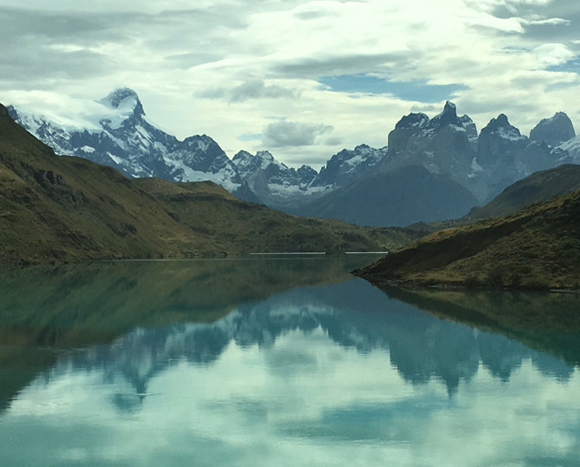

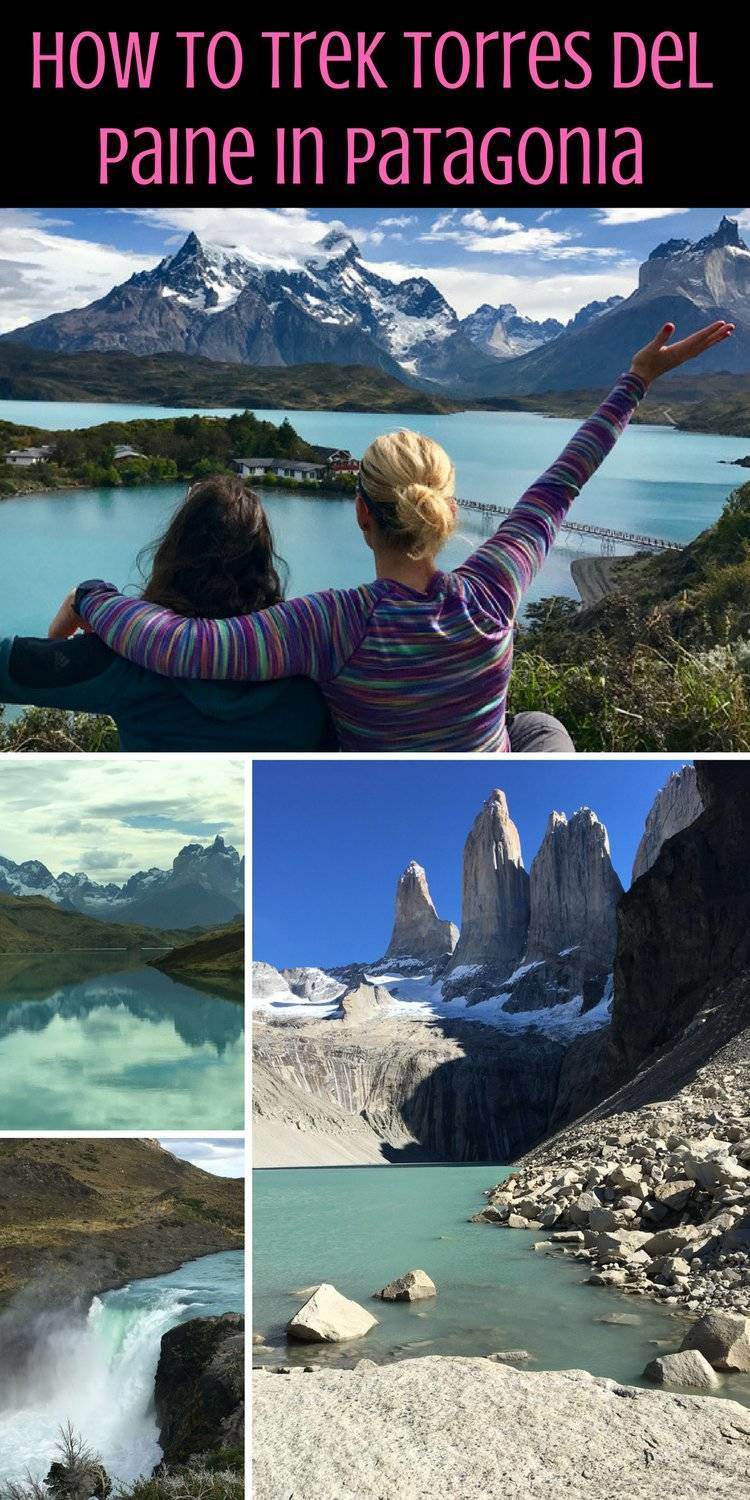
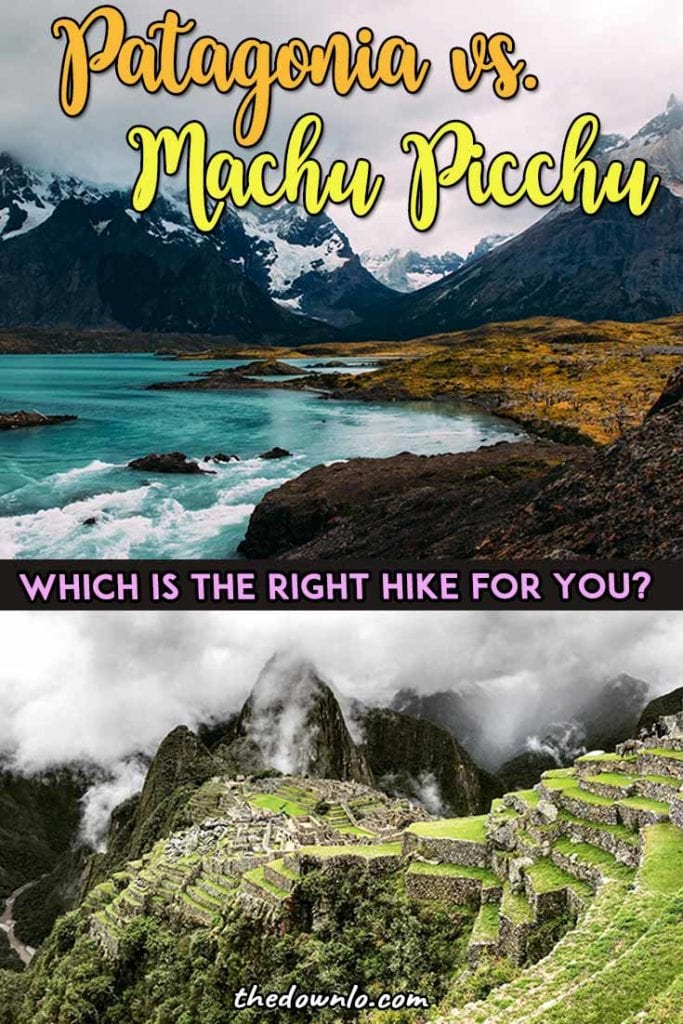
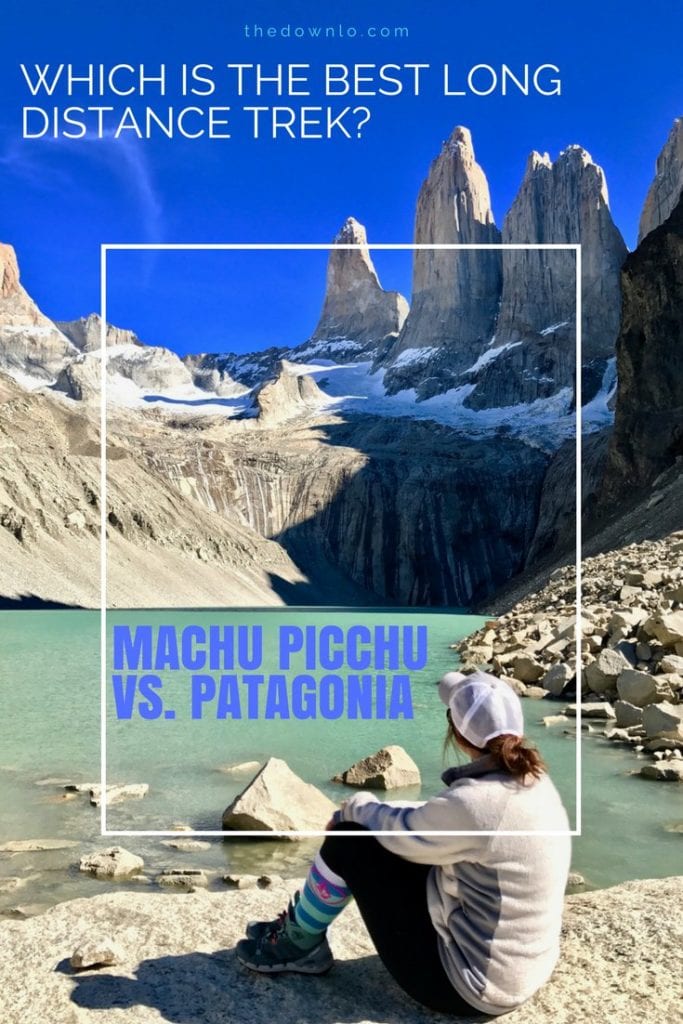
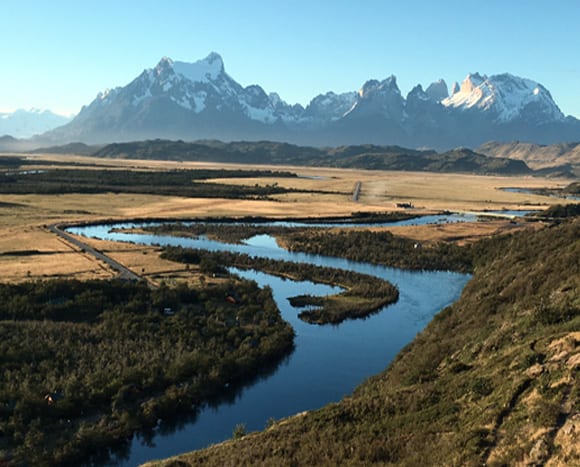
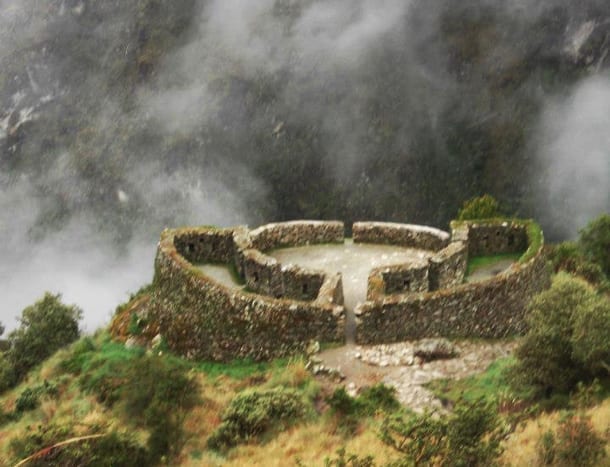
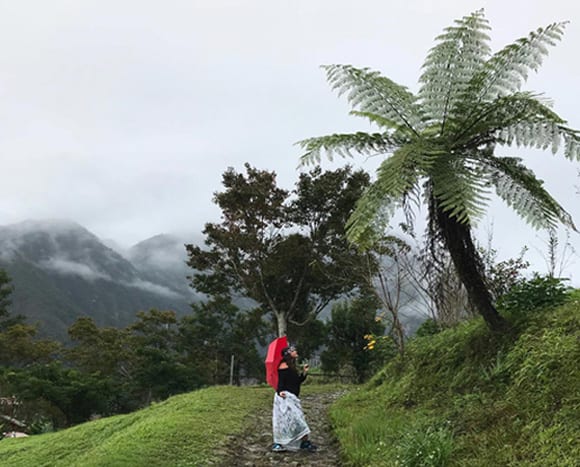
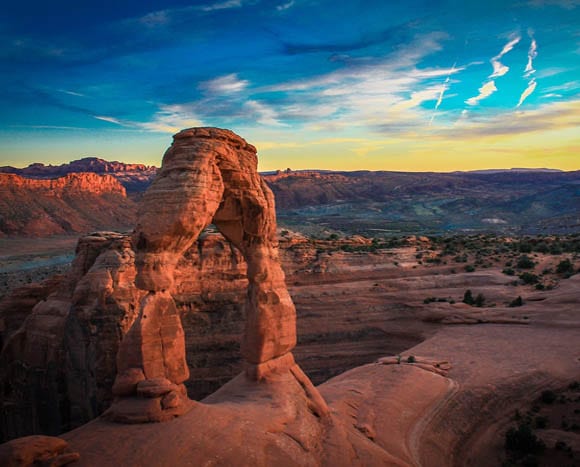
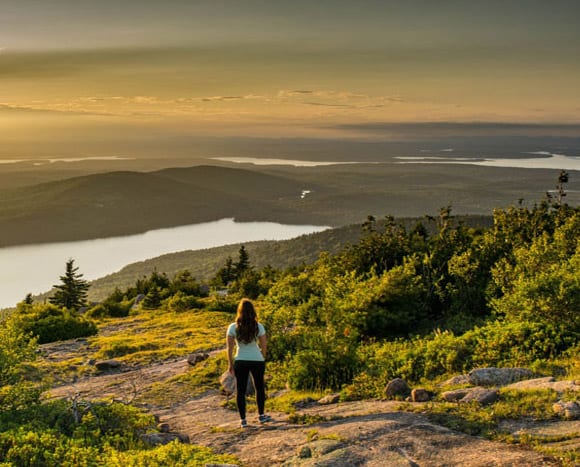
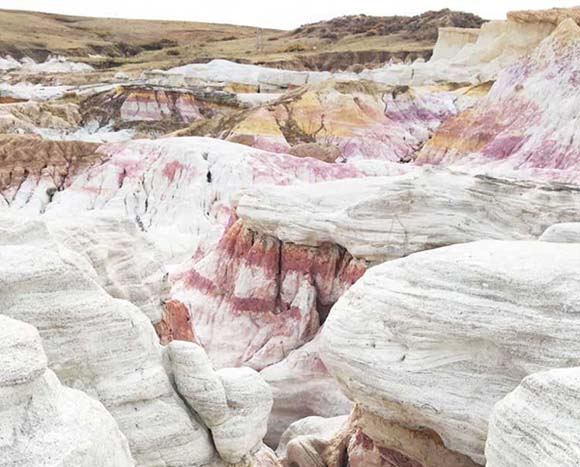

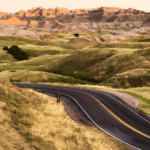
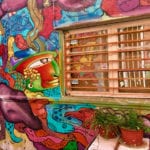
Thanks for the comparison! I did the Salkantay Trek 2 years ago and it definitely was difficult! Glad to hear that the Patagonia is more leisurely because I would like to do that someday. Your pictures are beautiful!
Thank you! Every single landscape looked like a stock photo — you really can’t take a bad picture. I must say I enjoyed Patagonia much more. I never like feeling like I’m holding up a group because I’m by no means the fastest hiker.
I never really considered Machu Picchu, but always wanted to go to Patagonia. Thanks for the round up and tips! Would you say Torres del Paine is good for solo trekking?
Yeah! Everyone we met was super nice and welcoming. It seemed like everyone was there on some sort of journey / life interlude so they all had really interesting stories.
I have zero desire to go to Peru (I knooooow) and every desire to go to Patagonia. Planning a trip there this time next year, I do believe! Will be calling on your expertise in the future 😉
This is awesome information! Thank you. Been wanting to do the trail up to Machu Pichu for a couple of years now. Maybe will finally plan it this year 🙂